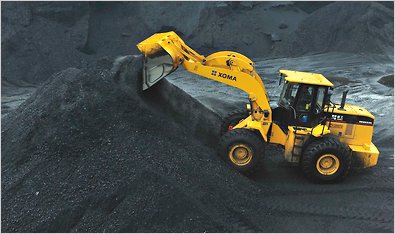I couldn’t have asked for a better time to begin this civic issues blog, with the 57th inauguration of the United States President Barack Obama on January 21. Most will agree that the United States is at a pivotal point in its history. With the mounting environmental and energy crisis reaching its peak and worldwide economic conditions complicating foreign relations in unprecedented ways, the US has a lot on its plate within the upcoming decades.
With such overwhelming pressures looming at the forefront of public thought, Obama’s inaugural address was only a short few pages; a merely twenty-minute speech delivered to the country in which he was responsible for summing up his role as the next president of the United States. Perhaps the most inspiring part of his inaugural address was that despite it’s limited nature, Obama dedicated a relatively lengthy paragraph solely to the topic of sustainable energy and environmental health:
We, the people, still believe that our obligations as Americans are not just to ourselves, but to all posterity. We will respond to the threat of climate change, knowing that the failure to do so would betray our children and future generations. Some may still deny the overwhelming judgment of science, but none can avoid the devastating impact of raging fires, and crippling drought, and more powerful storms. The path towards sustainable energy sources will be long and sometimes difficult. But America cannot resist this transition; we must lead it. We cannot cede to other nations the technology that will power new jobs and new industries — we must claim its promise. That is how we will maintain our economic vitality and our national treasure — our forests and waterways; our croplands and snowcapped peaks. That is how we will preserve our planet, commanded to our care by God. That’s what will lend meaning to the creed our fathers once declared.
Hearing these words, I really can’t think of a more excellent way to dive into the next four years than with a president who is willing to place such importance on energy throughout his term.
But before we jump into the future of energy, as bright as I hope it is and which will consume most of the civic issues blog from this point forward, I think it’s important that we take a step backward and see what’s been happening within the recent past involving energy. From what I’ve dug up from news headlines and editorials from the past few years, I’ve painted a picture of the general state of things up until this point:

Within Obama’s last term, the EPA raised standards on coal power plant emissions of mercury and sulfur dioxide in what is often deemed by the media as Obama’s “War on Coal.” Whether this is actually an accurate interpretation is up for debate. While some editorialists seem to think that Obama is killing the coal industry, others think that the coal industry is killing itself. Statistically speaking, electricity generated from coal in the US dropped ten percent between 2008 and 2012. This figure, from the Energy Information Center, is staggering, and it could be attributed to several factors including environmental regulations or the rise of other forms of energy. In short, it seems relatively safe to predict that coal is on its way out in the US energy market.

Economically, the decline of coal has implications for other energy competitors, particularly natural gas. The natural gas industry has flourished under the Obama’s Administration. Most of us are probably aware of this without the aid of a statistic. The Marcellus Shale discovery and fracking controversy has dominated the center stage of energy within the past few years. The question of the sustainability of natural gas is still heavily debated, but one thing is for sure: natural gas drilling has entered into the energy equation big time since Obama’s first term.

Obama’s policies on oil seem to be a little unclear. While it has been suggested that oil companies are sure Obama hates them, it is also important to consider that Obama has never tried to stop big oil. An important decision will be made within the next few months that will be telling of Obama’s policies on oil; that is, the proposed Keystone XL oil pipeline that would deliver Canadian oil to refineries in the gulf region. This highly controversial pipeline is the topic of much energy and environmental debate, and will most likely be a topic for my civic issues blog at some point soon. In general, Obama has not taken a firm stand on oil, though he has openly condoned alternative renewables and clean-burning natural gas.
Certainly, as an aspiring energy engineer and sustainability leader, I have opinions about how different resources should fit into the entire country’s energy makeup. For instance, I am firmly against the continuation of big oil and coal, and I do not support natural gas drilling. While many view natural gas as a bridge technology to clean energy, natural gas is not renewable and its extraction is harmful to the Earth’s geography and biotic factors.
No matter how Obama choses to handle the difficult policy decisions he has on his hands regarding energy, I found his inaugural address to be inspiring. What I gathered from his words was that no matter how the US gets there, we, as a nation, are reaching for a state of sustainability. I can’t think of any better way to begin than with that.









